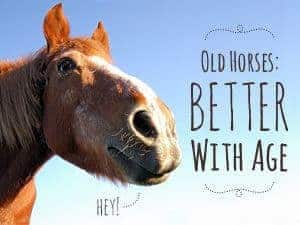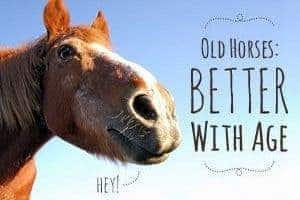"At Least She’s Feeling Good…"
- Topics: Old Horses: Better With Age
Earlier this year I attended a veterinary conference and listened intently as the speaker discussed pituitary pars intermedia dysfunction (PPID, or equine Cushing’s disease). As you might remember, our 24-year-old Miniature Horse, Brandy, was diagnosed with the disease in late-2011, so I’m always eager to hear all the new tidbits researchers have learned about the disease.
The session was wonderful and very informative, but a conversation after the presentations concluded struck me as most interesting. While discussing PPID treatment, one attendee stood and shared a story from his practice, in which he initiated treatment on an old, quiet horse and soon, that old, quiet horse was feeling really good and had regained the energy and attitude he’d had as a younger horse. Other practitioners agreed they’d had similar experiences. It brought a smile to my face that simple medical treatment can make such a difference in a horse’s life and comfort level. Three cheers for veterinary advancement!
I share this anecdote with you because not long ago it came to the forefront of my mind as I listened to my mother relay her experience earlier that day with Brandy and her spring shots.
We purchased Brandy from owners who weren’t well-versed in horse care and didn’t provide ideal care for her. She came to us extremely obese and with some behavioral issues due to improper handling. For instance, we couldn’t lift her tail for years because her former owners had used it in a restraint technique. So it didn’t necessarily surprise us when Brandy went ballisticÑrearing, kicking, bolting, etc.Ñwhen our veterinarian tried to administer vaccines for the first time. Clearly there were some issues from her past that we’d have to deal with, and our veterinarian was very understanding and helpful as we tried to help our new addition adopt a normal (and well-behaved lifestyle)
Create a free account with TheHorse.com to view this content.
TheHorse.com is home to thousands of free articles about horse health care. In order to access some of our exclusive free content, you must be signed into TheHorse.com.
Start your free account today!
Already have an account?
and continue reading.

Written by:
Erica Larson
Related Articles
Stay on top of the most recent Horse Health news with










